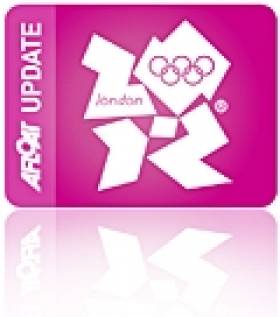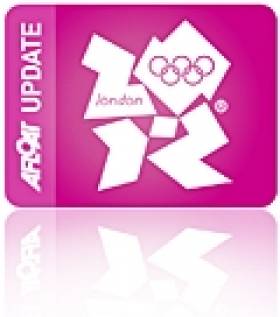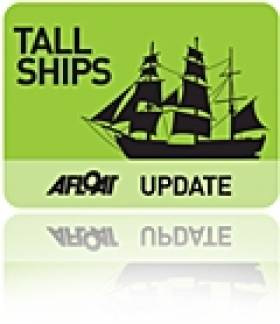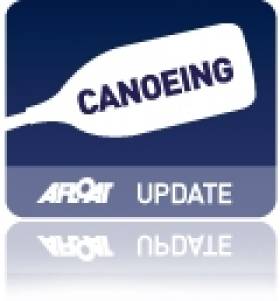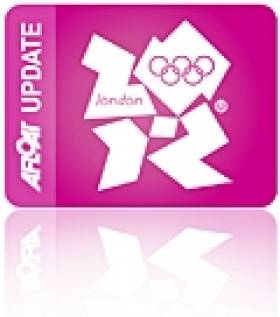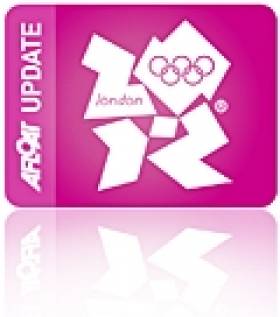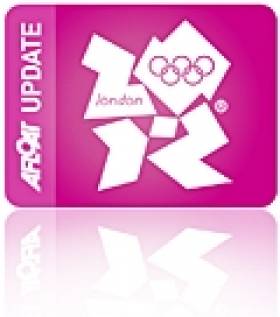Displaying items by tag: London
Dublin Hosts First ISAF Development Symposium in March
#DEVELOPMENT - Representatives from the International Sailing Federation's member nations throughout the world will meet at Howth Yacht Club from 17-18 March for the inaugural ISAF Development Symposium.
The aim of the two-day conference is to develop the criteria and future strategy for sail training and development within the governing body of world sailing, based on three core requirements:
- Fulfilling requirement set out in the ISAF Constitution to develop the sport and increase participation;
- Providing a structure for the sport to grow to meet expectations of the International Olympic Committee; and
- Supporting member nations in growing the sport in their own countries.
"Training is the key that will unlock and secure the future for our sport," said the ISAF in its development statement at the federation's annual conference last year.
Dublin was chosen as the host location for this first symposium as it will be hosting the ISAF Youth Worlds in July, just before the 2012 Olympic Games in London.
The international delegates, chaired by event organiser and ISAF training and development manager Dan Jaspers, will be supported by a group of ISAF representatives such as vice president Nazli Imre, development and youth committee chairman Olivier Bovyn, ISAF-nominated experts and the World Youth Sailing Trust coach, as well as invited specialist technical advisors.
More information about the ISAF Development Symposium is available HERE.
Egan Sets Sights on Olympic Canoeing Spot
#CANOEING - The Evening Herald reports that top Irish canoeist Jenny Egan is headed to Florida for a few months of training towards a spot at the 2012 Olympics.
A sprint and marathon racer, Egan was named as The Irish Times/Irish Sport Council's Sportswoman of the Month for May 2010 in recognition of some very impressive performances.
Indeed, the Kildare native enjoyed much success in 2012, with second place in the 5000m at the World Sprint Cup in the Czech Republic and a new Irish record in the 500m at the Canoe Slalom Worlds in Hungary among her achievements.
Heading into 2012, the Salmon Leap club member will surely be shrugging off setbacks like her crash in the heat and humidity of Singapore at the Canoe Marathon Worlds last October.
The new year brings a new focus, as Egan will concentrate on the 500m and 200m K1 sprint distances for the London games, with the final qualifiers - for just 15 spots - taking place in Poland in April.
The Evening Herald has more on the story HERE.
Irish Olympic Crews Seeking Qualification in Perth
#OLYMPIC–Ireland takes its place among the world's sailing nations in Perth, Western Australia this weekend for the start of a two-week long sailing championships that is a do or die regatta for Ireland's Olympic squad intent on competing at the London Olympic regatta next July.
There are high hopes that at least two crews will qualify at the ISAF world championships where over 75% of qualification slots are available. Irish officials say Peter O'Leary and David Burrows in the Star keelboat along with Annalise Murphy in the Laser Radial are not only front runners for qualification next week but also Olympic medal prospects.
There is no question both are consistent top 10 performers at world level. There is no question either of their heavy weather performances and as Perth is famous for its strong winds team insiders say a world class result for Ireland is possible.
Murphy won bronze at the Sail for Gold (a dry run of the Olympic regatta) in August and O'Leary won gold (albeit with a different crew) at the same event in 2010.
In the 49er dinghy Ryan Seaton and Matt McGovern are also aiming for the London Games and qualification here is by no means ruled out for the Belfast Lough pair.
Other Irish boats competing in Perth for the London ticket are two times Olympian Ger Owens from Dun Laoghaire now sailing with Howth's Scott Flanigan in the 470 dinghy James Espey will compete in the Laser, while Ross Hamilton will sail in the Finn
First into action on Monday morning will be Hamilton in the Finn. Murphy also has her first race in a 100-strong Laser Radial fleet.
Top international sailors put on a show of strength in Perth's Forrest Place on Friday to help launch the Perth 2011 ISAF Sailing World Championships.
Several thousand people in the CBD watched as the athletes paraded from Barrack Street jetty to the heart of Perth, where they were warmly welcomed by a team of hosts, including Western Australian Premier Colin Barnett.
The athletes had sailed upriver on Rottnest Island ferries from Fremantle, passing under bridges lined with well-wishers, and paraded through the city past a crowd of cheering locals, all braving the 33C heat.
While the Japanese and Korean teams posed for a combined photograph, the New Zealand men squeezed in some rugby practice in the backdrop.
Onlookers lined the streets as the athletes walked behind their national flags, occasionally cheering and posing for photographs.
They were led by a Royal Australian Navy band — described by the Chief Petty Officer Gabe Kicsak as a "rock band on steroids".
Irish flag bearer Scott Flanagan twisted the flag in his hands as he joked that the Perth heat was nothing compared to Ireland's "tropical climate".
Also in the procession was Hungarian windsurfer Aron Gadorvalvi, who could be seen getting a workout with his toddler daughter's pushchair.
Drifting in and out of the procession during the march were Denmark's athletes stocking up on ice-cream.
Among those in the crowd were Trinity Sale (9) and brother Mitchell (6) cheering on their dad, Australian 49er crewman Marty Sale, who will compete with his skipper Duncan Head.
Trinity, who attends Perth's Rawlinson Primary School, said: "I liked it a lot, especially as my dad was marching."
Forrest Place was awash with colour, flags and cameras small and large as the athletes made their entry.
"The Fremantle Doctor is calling — may you all achieve your dreams," ISAF President Goran Petersson said, referring to the world championships and Olympic selection at stake.
The ceremonial part of the event was opened by three Aboriginal dancers, with Dr Richard Walley on the didgeridoo and performing the traditional Welcome to Country.
The Australian anthem was sung by talented Perth busker, Fiona Mariah, a former contestant on a national television talent show.
Marching for the first time were six nations — Kyrgyzstan, St Lucia, Trinidad & Tobago, Cook Islands, Kazakhstan and Montenegro.
The athletes' oath was taken by three-time world champion Marcelien Bos-de-Koning (NED) and the officials' oath by jury chairman Bernard Bonneau.
Perth 2011 chairman Ian Campbell quoted Ernest Hemmingway in his welcome address — from a 1936 magazine article on why people go to sea. "The sea was the last wild place left."
He also quoted at length from a speech made by former USA President John F Kennedy after Australia's challenger Gretel took one race off the American defender Weatherley in the 1962 America's Cup at Newport, Rhode Island.
"It is an interesting biological fact that all of us have in our veins the exact same percentage of salt in our blood that exists in the ocean and therefore we have salt in our blood, in our sweat and in our tears.
"We are tied to the ocean and when we go back to the sea, whether it is to sail or to watch it, we are going back from whence we came."
Mr Campbell said: "I wish all the athletes lots of sweat, as little blood as possible, and tears of joy as you enjoy the magnificent conditions off Fremantle in the coming weeks."
India's coach Mohit Nautiyal said he was confident in his country's team.
"The Finn is definitely our strongest event," Nautiyal said.
"We are very hopeful for gold but [winning] is not very important. We are here because we enjoy sailing," China's team manager Ye Xiao said.
It was clear that most athletes admired the Perth surroundings.
Michael Hestbaek (DEN), a Star class competitor, said: "I originally came (to the opening ceremony) with the idea to have a sail up the river and see the beautiful and spectacular scenery."
"I'm sure there will be more to come," said the three-time world champion in Laser (2) and 49ers (1).
And on his hopes at Perth 2011: "I expect at least three teams to make the top 10 and hope some will medal. I'm hoping to be one of them."
Athletes then flooded the numerous Perth eateries for lunch before catching a train back to Fremantle.
Ireland Thankful to Escape Favourites Tag for Commodore's Cup 2012
Ireland's 2010 Commodore's Cup winning captain showed his relief at the news that Hong Kong have been tipped as favourites for next July's event, The Irish Times reports.
The announcement was made this week at the Royal Ocean Racing Club (RORC) in London, and should lift a burden off an Irish squad which has long suffered under the weight of being pre-event favourites.
Ireland's concerns instead have turned to whether a team can even be assembled for next summer's event in light of the difficult economic environment - and despite the RORC opening the rating bands to allow for more flexible combinations of boat sizes.
As previously reported on Afloat.ie, the Irish Cruiser Racing Association (ICRA) is seeking expressions of interest to form an Irish team and remains hopeful of mounting a serious defence of the title won by last year's Anthony O’Leary-captained squad.
The next Commodore's Cup - which also has a new title sponsor in Brewin Dolphin - takes place from 21 to 28 July 2012 in Cowes.
British Water Polo Team to Train in Ireland for London Olympics
Minister Varadkar said today (Thursday) that he is delighted to make this announcement, which highlights the importance of the National Aquatic Centre as a key sporting facility.
Minister Varadkar said: 'The British team was so impressed by the National Aquatic Centre when they came here in March, they have decided to come back to Ireland to train for the London Olympics'.
"The fact that the British water polo team has chosen Ireland, and the National Sports Campus in Blanchardstown in particular, for its pre-Olympic training demonstrates what a magnificent world class facility we have at the National Aquatic Centre."
The British water polo team will use the NAC for a two-week training session in July 2012, immediately before the London Olympics. The development is a direct result of the international matches held at the NAC earlier this year, between the British and Hungarian water-polo men's senior squads.
The news was also welcomed by Minister of State for Tourism & Sport Michael Ring, who chairs the Inter-Agency Committee in the Department of Transport, Tourism & Sport which is promoting Irish involvement in the London Olympics.
Minister Ring said: 'I'm delighted that the Committee's hard work is once again bearing fruit. We have already secured the US Olympic synchronized swimming squad and the British paralympic swimming squad, which will both be using the NAC as a training base for the Olympics'.
"The Inter-Agency Committee will work right up to the Olympics. As well as seeking to attract national teams to train in Ireland, we are staging Irish cultural events in London, and promoting Ireland as a destination for Londoners hoping to escape the Olympics."
US Cutter Eagle Returns to Home Port After Europe Voyage
The US Coast Guard's training barque Eagle returned to her home port of New London, Connecticut last week after a summer-long voyage to Europe.
Last May the ship and its crew paid a visit to Waterford ahead of this year's Tall Ships Races, where it met a contingent of Connecticut residents, before sailing on towards Hanover, Germany where she was first constructed 75 years ago.
Other ports of call included London, Reykjavik, Halifax in Nova Scotia and a final stop in New York City.
"The cadets had an incredible chance to sail the Atlantic as it was meant to be sailed," Captain Eric Jones told Connecticut's The Day.
The captain noted that it was also a voyage of remembrance, referencing the history of the ship - which the US received in reparations after the Second World War - and the laying of a wreath to memorialise the Coast Guard cutter Alexander Hamilton, torpedoed by a German U-boat off the Icelandic coast in January 1942.
The Day has much more on the story HERE.
Ireland's Hopefuls Test London Olympics Canoeing Course
Ireland's four Olympic canoeing hopefuls were invited to take part in an Olympic test event to mark one year till the start of next summer's games, The Irish Times reports.
Eoin Rheinisch and Ciarán Heurteau in men’s K1 joined Hannah Craig and Aisling Conlan in women’s K1 to compete in closed-door elimination rounds at Lee Valley Whitewater centre on Thursday.
The event mirrors the format of next year’s Olympic Games, so the field of 52 competitors in the K1 men's competition were set to be reduced to 21 for today's finals.
Rheinisch – who finished fourth in Beijing three year ago – made positive comparisons between the man-made course in north London and the Chinese venue.
Ireland is on the entry list in six classes for the Weymouth and Portland International Sailing Regatta 2011, the London 2012 Olympic Test Event, that has been finalised today.
Ireland's leading hopes for a top result is in the Radial class where Annalise Murphy took bronze at the Sail for Gold regatta at the same venue. There's also high chances in the Star class with Peter O'Leary and David Burrows. Also sailing for Ireland is James Espey is in the Laser, Ross Hamilton in the Finn, Ger Owens and Scott Flannigan in the 470, Ryan Seaton and Matt McGovern in the 49er. A full entry list is available for download at the end of this post.
Sixty six nations have submitted the names of the 460 sailors who will test the conditions at Weymouth and Portland one year ahead of the London 2012 Olympic Sailing Competition.
For many of Member National Authorities there has been a selection headache with nations following game time rules where only one athlete per event is allowed.
In the Finn class Great Britain's Ben Ainslie was selected ahead of Giles Scott and Ed Wright, Spain's Marina Alabau received the nod ahead of Blanca Manchon and Anna Tunnicliffe (USA) lost out to Sally Barkow (USA).
The Women's Match Racers open the Weymouth and Portland International Regatta on 2 August 2011 with the start of their Round Robins. The Men's and Women's RS:X begin on 4 August followed by the Laser, Laser Radial and Men's and Women's 470 on 5 August before the Finn, 49er and Star sailors begin their competition on 6 August.
The London 2012 Olympic Games Sailing Competition will take place at the Weymouth and Portland Sailing Academy and Portland Marina, located in Dorset on the South Coast of England. Racing is scheduled to take place from 29 July to 11 August.At the 2012 Games sailing will introduce women's match racing for the first time. The racing format will be a single round-robin, quarter finals, semi-finals and then the finals. The nine fleet racing events will all sail an opening series before the top ten in each event contest a double-points Medal Race to decide the final positions. The Medal Races have a target time of approximately 30 minutes and will take place close to the shore at the Nothe to allow spectators ashore to get close up to the action.
Irish Olympic Keelboat Trials Starts this Month
Act one, scene one of Irish sailing's bid for Olympic glory in London next years kicks off this month when rival helmsmen Max Treacy and Peter O'Leary square up for the right to represent Ireland next July at the Olympic Regatta in Weymouth.
The Irish Star keelboat Olympic trials gets underway on May 24th on the waters off Medemblik, Holland as part of the massive ISAF Delta Lloyd regatta.
O'Leary with new crew (and triple Olympian) David Burrows will go head to head with Treacy and Anthony Shanks in a 23-boat fleet that has attracted all the top teams, a mirror of next year's Olympic regatta itself.
The two Irish boats haven't met since last August when O'Leary sensationally won Britain's Sail for Gold Olympic test event at Weymouth and Treacy withdrew with boat problems.
Since then O'Leary and Burrows have been training in the USA scoring a significant second overall at the Bacardi Cup in February.
Treacy and Shanks have proved a formidable combination clocking up some impressive results over a decade or so in the Star class competing first for a place for Athens 2004, then Beijing and now London. It is understood the pair are hooking up next week with long time training partner (and British Olympic Gold medalist) Ian Percy for an intensive two week training session.
While the first of the nomination trials is to be held in Holland, the second is in July in Weymouth but it's worth remembering the first chance of nation qualification – where 75% of Olympic slots are up for grabs – is not until December in Perth, Australia.
The new procedures set out for Olympic qualification were announced by the Irish Sailing Association in January.
The memory of the selection debacle from four years ago is still very much in mind. Back in 2008 a decision to send O'Leary instead of Treacy was made by an ISA selection committee rather than on the water trials, a move that was unsuccessfully appealed by Treacy to the Olympic Council of Ireland (OCI). It was a divisive period for Olympic sailing in Ireland.
Confirmation this week that both teams are entered for the Delta Lloyd regatta in Holland and both boats are also entered for Perth indicates the stage is set for the next episode of Star wars.
O'Leary and Burrows Pipped by Single Point for Bacardi Honours
France's Guillaume Florent and Pascal Rambeau accomplished a rare achievement in Saturday's finale of the 84th event Cup.
Florent, the 2008 Olympic bronze medalist in the Finn class who switched over to Star keelboat last year, won the prestigious regatta at his first attempt.
O'Leary and Burrow's second overall in the 93-boat fleet is being hailed as a major result for the pair who have sights firmly set on selection for the London 2012 Olympic Games.
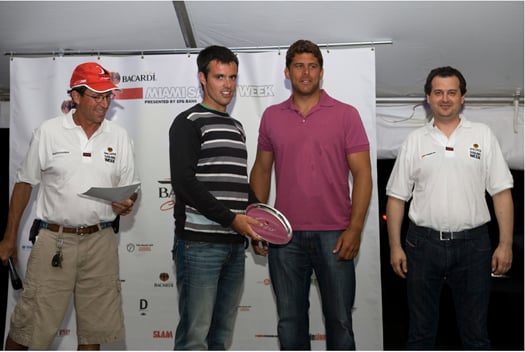
Peter O'Leary and David Burrows (centre) receive the Bacardi Cup second place salver in Miami yesterday. Photo: Courtesy Bacardi Cup/Star Class
Their final score after six races that began on Monday was 24 — only one point behind the French duo.
In a consistent display of speed and tactical ability against a big international fleet only Ireland posted the most consistent scores of the series with all results in the top ten.
Racing in the event was cut short due to thunderstorms on Thursday.
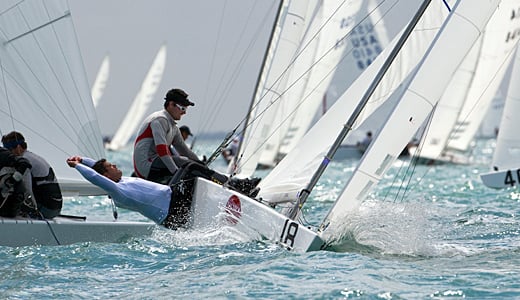
Peter O'Leary with crew David Burrows at full stretch at the weather mark. Photo courtesy Bacardi Cup
O'Leary and Burrows recorded single-digit finishes over the course of the regatta; they finished with an 8-4 on the penultimate day to move from fourth overall into the lead of the 89-boat fleet with 18 points only to lose out in the final race.
Full Results HERE.
Star Class website/results/comment HERE
Photos of O'Leary and Burrows in action on our gallery HERE
Podcast interview and Career highlights of Peter O'Leary HERE




























